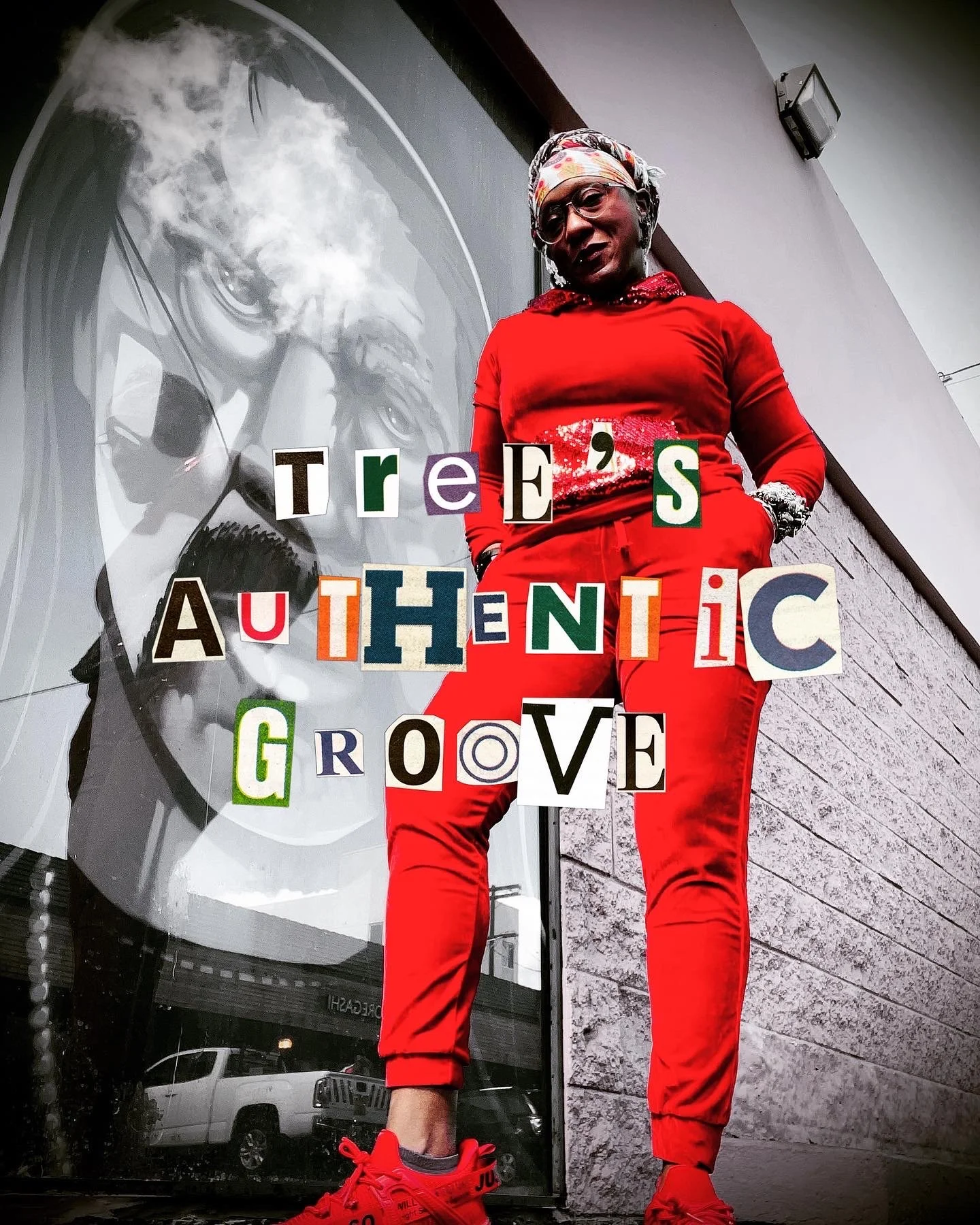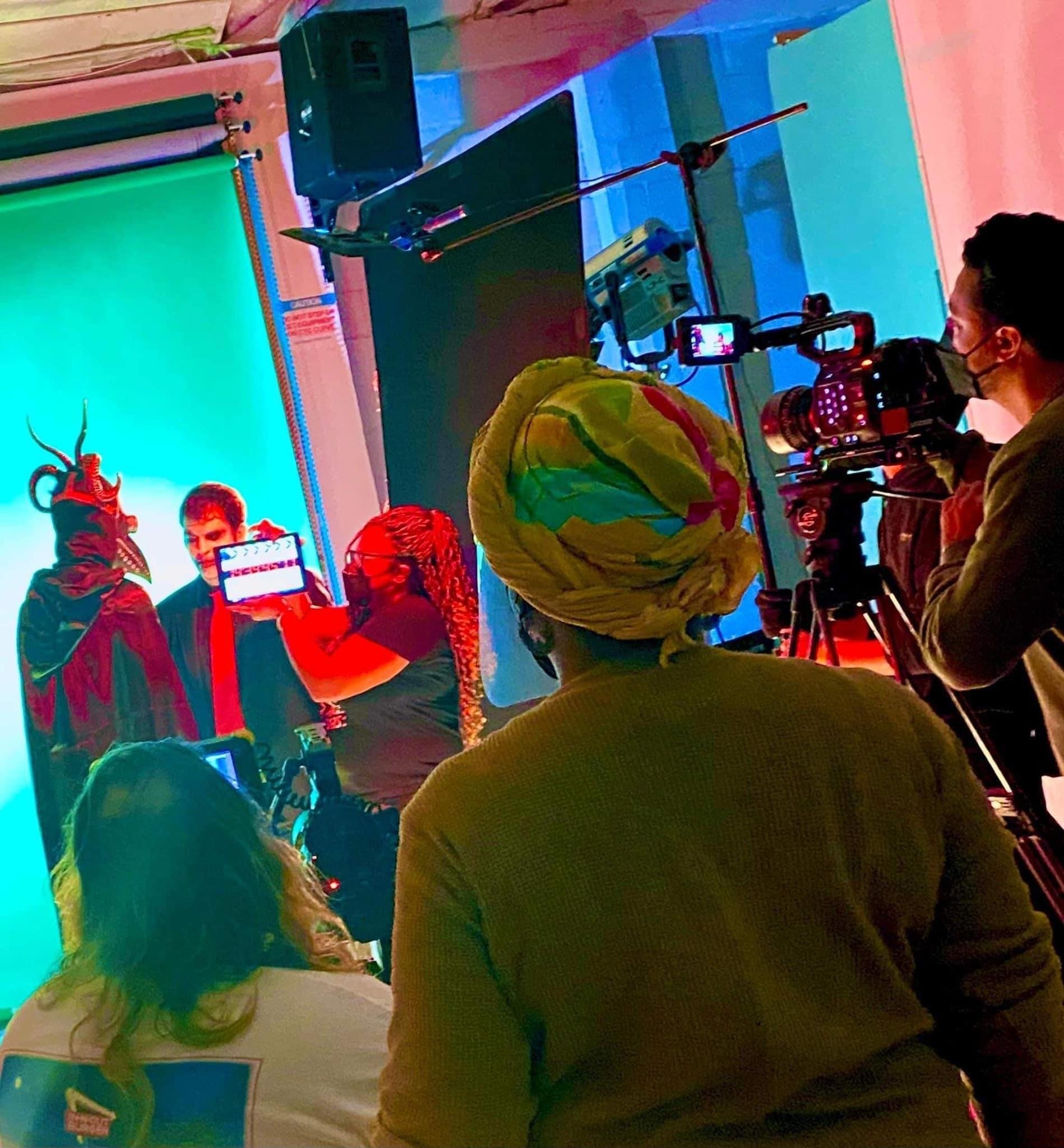Interview with director Trelanda Lowe
Welcome Trelanda, we are very excited to have you today with us to discuss about your work.
Who is Trelanda Lowe and how did the passion for filmmaking begin?
I am a Californian native who works as a director, writer, producer, and podcast host. From an early age, I was fascinated by the media. Apocalypse Now was introduced to me by my family when I was nine. Despite its dark and psychological undertone, Francis Ford Coppola established a raw perspective of what the Vietnam War characters had to go through in Apocalypse Now. Cinematography trumped emotional energy in my eyes. I was locked in by the visual. In addition, Sidney Lumet's The Wiz sparked my passion for cinema. An all-star cast of predominantly black actors who were not only talented actors but all came from different musical backgrounds.
Many television shows, such as All in The Family, Sanford and Son, Good Times, The Facts of Life, and countless others, connected to me through their social issues, combining comedy and drama to connect the audience seamlessly. The supernatural content in shows like Highway to Heaven, Touched by An Angel, and Lucifer allowed me to connect with people navigating daily struggles captured from a religious perspective. Through writing and directing content that is intellectually twisted, captivating, and thought-provoking, I strive to broaden the world's perspective on global social issues.
It was photography (cross-process, B&W, color, e-6, and other gelatin processes) that led me to media today. As a result, I have won numerous awards for narrative, documentary, and podcast content that focuses on disability subjects due to my connection as a disabled individual, and advocate.
Can you tell us about your previous work?
As part of my work in 2019, I produced a documentary called Drama No Drama. My experience with this project was remarkable and sparked a desire to create documentary story content at an even higher level. Apart from the other shorts and music videos I have worked on, I have also served as a red-carpet photographer and a still photographer during my time working in the industry. Having the opportunity to work with so many talented individuals has been an amazing experience.
CONVERSATION ABOUT: DELUSIONAL STATE
What inspired you to create "Delusional State," and what themes or messages were you aiming to convey through the film?
Delusional State is a film that has a psychological, and supernatural premise, and I immediately identified myself with the film. There is a lot of content that delves into relatable life conflicts that people encounter daily. Furthermore, it was vital to introduce a disability story that included how individuals in the community navigated through the world with ableism, dysfunctional relationships with their family and friends, and how they rose above the trauma they experienced. In my film, I convey a message that says, "If you’re given a chance at redemption, you should follow that new uplifting journey to discover what life has in store for you despite what’s thrown at your lap."
The plot of "Delusional State" is intricate and multi-layered, touching on themes of redemption, self-discovery, and the consequences of one's choices. How did you approach balancing these various narrative elements to create a cohesive story?
I approached Delusional State film by exploring good “Angel” versus evil “Mr. Grim” battling a competitive game with mortals on Earth who navigate numerous obstacles, while they compete for a place on the throne next to their bosses: God and the devil. When I worked on the scenes with Angel, God, Mr. Grim, and the devil, I wanted my audience to get a sense of what heaven and hell were depicted as, and the emotional range captured by my cast. In another scene, feathers fell onto an umbrella. My main goal with this was to establish the umbrella as the hub where we all collectively shape without realizing our connection with each other. However, the falling feathers symbolized another fallen angel.
It was also a priority to explore a supernatural story with multi-layers of technical aesthetics (color, lighting shift, production design, cinematography, etc.) and the emotional journey of all of the characters in this film. As an example, dark green or black is a symbol of sickness or death if we examine the metaphor of color lighting arrangement. Saturated colorful lighting at an event (party, nightclub, etc.) symbolizes vibrancy and excitement from the character's point of view. To connect my audience to the message and structure of my content story, it was important to deliver a balance of all the elements together.
The characters in "Delusional State" face a wide array of challenges, from navigating dysfunctional relationships to battling addiction and PTSD. How did you ensure authenticity and sensitivity in portraying these struggles ?
While developing Delusional State, I found that it was critical to provide relatability about personal struggles with addiction, PTSD, and dysfunctional relationships. These struggles have emotionally imprisoned people’s lives from destructive seeds transplanted from society's influences, and how to transform for the better. Although my lead character had no lines, I decided to have my character Ryan emotionally show what he was suffering through without dialogue. A metaphor for Ryan’s inability to vocally find his voice with the people in his life overpowering him and illustrating a lack of support. In the scene in which Angel and Mr. Grim are reprimanded by God and the devil, I wanted my audience to be able to understand both of these supernatural characters' conflicted emotional responses as they deal with their competitive bosses. Moreover, I decided it helped establish a tempo for how everyone around Ryan affected his life too (friends, lovers, family, and family pastor). As Ryan experiences a PTSD dream about his childhood pastor, he is faced with a rude awakening when he wakes up at his A.A. Meeting the new church resident, who is the same person from Ryan’s dreams. I wanted the audience to connect when Ryan relapsed from his addiction after the A.A. Meeting, the consequences of coming close to death, and learning his fate being introduced to Angel and Mr. Grim.
How did you approach the visual and auditory aspects of the film to enhance its storytelling and emotional impact?
Visual and auditory were powerfully significant in Delusional State because I needed my audience to connect with the metaphor revolving around what was presented. When I studied media in college my professors mentioned the importance of connecting with your audience visually and auditorily. My goal when working on the visual aspect of Delusional State was to evoke an emotional connection to the character's world from their point of view. When my lead character, Ryan, was struggling with his PTSD and escaped to a place he found safe at the nightclub, it was critical to illustrate the glorious illusion life holds with the vibrant color shift. However, when Ryan is at the hospital, Angel and Mr. Grim, stand over Ryan and give him an ultimatum. It was significant for the color grading to shift into a less vibrant quality to depict Ryan’s closeness to death. Moreover, the sound quality was a major key to connecting the audience auditorily to the character's world and other connecting elements (heart monitor, emotional dialogue, music, etc.). My professors would say "What breaks a film is audio. It doesn't matter how poorly developed a film is, if the sound quality is excellent, then you've saved the film."
Were there any challenges you faced in executing your stylistic vision for "Delusional State," and how did you overcome them?
Every director has faced challenges working on any project. However, I wanted more time to infuse other technical elements (camera movement, lighting, extending dialogue, and more days to shoot). Delusional State was a one-day, twelve-hour shoot covering six pages, shot from numerous locations, set changes, etc. It was key to staying emotionally contained when canceling ideas in pre-production. Originally, I had intended to shoot the entire film, but it would’ve required additional funding and days to capture everything as planned.
Is there a particular moment in this project that holds special significance for you, either in terms of the filmmaking process or the final product?
I would say that pre-production through the post-production phase was a process to ensure the quality of work I wanted to achieve. It was imperative to maintain the authentic quality of the story premise without getting lost in my objective with Delusional State. Honestly, the whole project from start to finish held significance. Among each phase of the project, I do not consider any particular portion more important.
Finally, what do you hope audiences take away from "Delusional State," and what impact do you envision the film having ?
The idea I wanted my audience to take away was the concept of life struggles, rebounding in a positive direction. Delusional State has the potential to make an impact on my audience by allowing them the opportunity to reflect on what they would do if they were given thirty days of redemption to transform their lives for the better. Also, I would like to provide my audience with a compelling and realistic interpretation of a supernatural religion film, but in a realistic and relevant manner. I also envision Delusional State to be an episodic series that is favored just like shows such as Lucifer and numerous others.
As ironic as it may sound, so many people criticize others who navigate their disabilities and personal problems in a world oriented towards religion by using ableist or judgmental response behavior because they assume they are allowed to show these behaviors without being reprimanded. However, as Bob Marley famously said, "The road to life is rocky, and you may stumble too. So, while you point fingers, someone else is judging you.”
This marks the conclusion of the interview featuring our esteemed artist, Trelanda Lowe. Our community is growing steadily, with a continuous influx of skilled filmmakers and screenwriters joining us. Explore our other interviews, and consider scheduling one for yourself to showcase your creative endeavors.
To publish an interview simply submit on the INTERVIEW OF YOUR FILM category on our Filmfreeway page.







